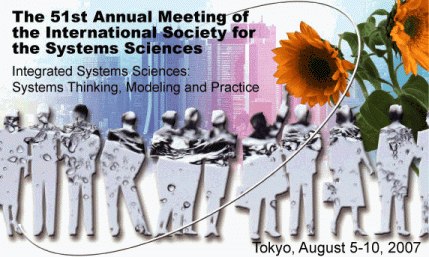Agent Based Epidemiological Simulation for Pandemic Protection of Emerging and Re-emerging Infectious Diseases
Keywords:
Pandemic Protection, Smallpox, Epidemiology, SOARS, Agent Based SimulationAbstract
Purpose Next pandemic caused by mutated H5N1 bird flu or bioterrorism is serious for the safety of our society. In this paper we focus on a modular type of agent based simulation model for pandemic protection. We use SOARS as an agent based simulation framework that is developed by Deguchi Laboratory, Tokyo Institute of Technology. We have developed the basic models of agent based social simulation for protecting pandemic caused by human to human outbreak of mutated H5N1 bird influenza or smallpox by bioterrorism. Methodology The agent based simulation is sometime called the individual approach. The epidemic model of agent based modeling was developed by K. Carley, at C.M.U and Epstein at Brooking Institution [Carley, 2003; Epstain, 2004]. The former treats the infection by "Anthrax" depending on her agent based simulation with a social network of agents. The later treats the infection by smallpox on the cell based model of agent simulation. The protection policies investigated on these types of agent based approaches include vaccination, isolation and blockade. These types of policies are connected to agent activities in the societies. The cell type model is basic and intuitive. Then it is widely used. In the simulation model of emerging influenza pandemic in Southeast Asia they use the cell type model for analyzing the effectiveness of "Oseltamivir (Tamiflu)" [Ferguson, 2005]. We have introduced another type of model for agent based approach. We introduce the concept of spot that is a place on which agents interact. Agents also move among spots depending on their social roles. Spots stand for home, office, school, hospital, train and other social places depending on the model scope and subdivision of the model. For the purpose have developed the agent based simulation framework called SOARS . Model The simulation model is divided into three basic modules. The one is a state transition module of disease under the physical condition and medical treatment(fig. 1). The next is a contamination and infection module that contains six types of protection policies of contamination and infection. The third is a human activity module on a virtual city that contains several types of social activities of agents(fig.2). We combined these modules and introduced the social and medical protection policies. We evaluated the protection policies on the combined model. Result We have simulated 23 scenarios of pandemic and its protection policies such as the limit of the stock of vaccine, delay of starting vaccination, speed of vaccination and school closing(fig. 3). As a result we have shown that enough stock of vaccination and quick vaccination are effective to decrease the damage. Consideration Agent based epidemiological simulation is an effective way of making model with the collaboration of domain experts. It is important that various types of specialists such as systems analysts, public health specialists, medical doctors and urban planners can collaborate on the modeling of simulation for protecting emerging and re-emerging infectious diseases including the smallpox. We have developed the group programming methodology with SOARS where the system analysts and domain experts cooperate with each other for quick development of the mode. Reference [Carley, 2003] K. M. Carley, et al., "BioWar: Scalable Multi-Agent Social and Epidemiological Simulation of Bioterrorism Events". NAACSOS conference proceedings, Pittsburgh, PA, 2003. [Deguchi, 2006] Hiroshi Deguchi, et al. "Social Simulation Design for Pandemic Protection", The First World Congress on Social Simulation. Proceeding, Vol.1, pp.21-28, 2006 [Epstein, 2004] , Joshua M. Epstein(e.d.),Toward a Containment Strategy for Smallpox Bioterror: An Individual-Based Computational Approach , Brookings Inst Pr, 2004 [Ferguson,2005] Neil M. Ferguson, et al., Strategies for containing an emerging influenza pandemic in Southeast Asia , Nature, 2005Published
2007-07-31
How to Cite
Deguchi, H., Yasuhiro, K., Kaneda, T., Koyama, Y., Ichikawa, M., Saito, T., & Tanuma, H. (2007). Agent Based Epidemiological Simulation for Pandemic Protection of Emerging and Re-emerging Infectious Diseases. Proceedings of the 51st Annual Meeting of the ISSS - 2007, Tokyo, Japan, 51(2). Retrieved from https://journals.isss.org/index.php/proceedings51st/article/view/789
Issue
Section
Agent-based Social Simulation

